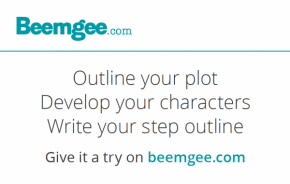The Protagonist
The protagonist is the main character or hero of the story.
Photo by Jack Moreh on Freerange
But “hero” is a word with adventurous connotations, so we’ll stick to the term protagonist to signify the main character around whom the story is built. Sometimes it is not so easy to know which is your main character.
Generally speaking, the protagonist is the character whom the reader or audience accompanies for the greater part of the narrative. So usually this character is the one with most screen or page time. Often the protagonist is the character who exhibits the most profound change or transformation by the end of the story.
Furthermore, the protagonist – and in particular what the protagonist learns – embodies the story’s theme.
For simplicity’s sake, let us say for the moment that in ensemble pieces with several main characters, each of them is the protagonist of his or her own story, or rather storyline. Since the protagonist is on the whole a pretty important figure in a story, there is a fair bit to say about this archetype, so this post is going to be quite long.
In it we’ll answer some questions:
- Is the protagonist the most interesting character in the story?
- What are the most important aspects of the protagonist for the author to convey?
- What about the transformation or learning curve?
How Interesting Must The Protagonist Be?
Some say the protagonist should be the most interesting character in the story, and the one whose fate you care about most.
But while that is often the case, it does not necessarily have to be true.
In many stories, the protagonist is actually less interesting than others in the cast of characters, because the protagonist needs to be the least specific of them all.
How so? Well, for a story to have an emotional effect on the recipients of the story, the audience or readers, the recipients need to feel what the hero is feeling, should be putting themselves into his or her place. Physiologically, we experience a story as the protagonist experiences it (at least as the protagonist of the particular scene we are consuming at the time experiences it). Our hearts beat faster when the protagonist’s does, our palms might sweat, we crouch down in our seats in anxiety, etc. In a sense, then, at that moment the audience or reader is the protagonist – because the experience is shared. This is a vital effect – it is what makes the story an emotional experience.
And let’s not forget that we learn far more from experience than from articulated rational presentations of academic or statistical knowledge. So sharing the protagonist’s feelings creates sustainable, long-term meaning. Out of the emotional comes the rational, not the other way round.
For this to work, the audience/reader must be able to connect to and to an extent empathise with the protagonist, and project onto him or her a part of the self. Which means that the protagonist must have some quality which is so universal as to be recognisable, relatable and understandable to the audience/reader. Even if these are negative qualities which the audience/reader would actually consciously shun or deny in “real life”.
Hence the protagonist may not be excessively quirky or idiosyncratic, because that might prevent some of the recipients from identifying with the protagonist’s struggle.
In other words, in order to give all the readers or audience members the chance to identify with the protagonist, the protagonist needs to be the character with the broadest possible scope for projection.
This technique is particularly visible in stories popular with younger audiences. Think of Harry Potter, Luke Skywalker, Frodo Baggins. They are the ones at the centre of their respective works. But be honest, aren’t Snape, Han Solo, or Gollum more interesting as characters?
In Harry Potter, Star Wars, or The Lord Of The Rings, the hero is a screen, a relatively blank space onto which the reader or audience can project their own personality.
In stories for older people the same holds true, even if it isn’t as obvious. Just as an example, the range of characters in Orange Is The New Black is diverse and engaging. But the lead character, Piper Chapman, is the one whose lifestyle most resembles the demographic the show is aiming at, or at least is the most recognisable and familiar for a greater part of the target audience.
Having said all that, of course your protagonist is the chance for you to create someone truly unique and individual. Someone passionate, opinionated, bold, wacky, and in some way more extreme than you yourself – or most of your audience – would ever be. A protagonist can and probably should break rules, do things unthinkable, go places beyond most people’s experience. Push your protagonist as far as you can! No holds barred. No excuses.
The Most Important Aspects of the Protagonist
It is often said that the audience or reader must understand the protagonist’s motivation. But this isn’t necessarily true either.
It is not always important to know why a character is doing something in order to be fascinated. Why does Iago want to destroy Othello? We’ll never really know. What the audience or reader must understand, however, are the protagonist’s:
– Flaw
– Want
– Goal
– Task
The flaw may be a negative character trait, such as a shortcoming, deficiency or lack. Classically, the shortcoming may be an excess of a negative quality, such as pride. Generally speaking, the flaw is typically one of egoism. It may, especially in serial formats, simply be a deficiency in or lack of knowledge or awareness of a particular truth. But a flaw must be there, because without it, the character would have nothing to learn.
The want provides the driving force of the surface structure of the story, its outer or external side.
The goal is what is set up as the supposed way to achieving the want.
The task is the what the protagonist has to do, the mission, i.e. the means of reaching the goal.
A good way of helping the audience or readers to understand all these factors is a strong antagonism. This force in the story may be personified in a “baddy”. In many emotionally effective stories, this character is often a polar opposite to the protagonist – on all levels, right down to the way they look. Luke Skywalker is small and white, Darth Vader is big and black.
All of that means that often a protagonist is either still very young, with obviously much to learn, or somehow damaged by life, prone to making mistakes, perhaps even potentially unlikable. But even with unlikable protagonists, there must be some redeeming quality, something that makes you doubt the character is really bad. Indeed, audiences/readers tend to search for, hope for, expect the protagonist to do the right thing in the end.
A protagonist is a chance for your audience to see how it is possible to feel, act, grow and change – if they weren’t trapped within their own self.
The Learning Curve
What makes the protagonist the most important figure is really not so much the screen or page time, but usually that she or he is the one who has greatest internal problem or conflict, who has the most significant emotional transformation. That means the protagonist tends to be the one who grows most, and whose story journey or character arc is therefore the longest.
Coming of age stories are obvious learning curves, and at their hearts that is what the above mentioned examples (Harry Potter, Star Wars, Lord Of The Rings – all of them essentially fairy tales) are. They also involve a sense of leaving behind, of loss. It is a universal experience, shared by all of the audience, by all readers.
So there is room to identify with and learn from the protagonist. But in order to get the audience/readers interested, a reason to be interested must be presented. Usually this is accomplished by instilling a sense of pity. Harry lives with unpleasant foster parents under the stairs, Luke’s foster parents are nice, but they get killed. We identify with Frodo through his relationship to Bilbo, and then through the threat to his entire home, as presented by Gandalf.
This sense of Aristotelian pity is what gains the protagonist our sympathy. We feel they deserve better. We may experience some degree of moral outrage at their plight.
What gets us really hooked is their volition. Protagonists tend to be driven by something quite essential. Harry yearns to find out about his real parents, especially his mother. So does Luke, and he wants to get away from the farm, wants adventure. Frodo’s drive is triggered when Bilbo, whom he loves, disappears.
So the protagonist is active. The protagonist’s drive does not usually come to him or her from the outside, but is often a quality within him or herself, that may need to be found or uncovered first.
Once they get going, protagonists get threatened. That makes the protagonist – and us – feel fear. Often the stakes rise and grow higher and higher.
And in the end – catharsis.
By the end of the story, the character has learned something, is wiser than at the beginning. However, more important still than that the protagonist learn something is that the audience has experienced the learning curve. It’s always about the audience – the protagonist’s struggle and internal development is just the means to the end of getting the audience to learn what it is you are trying to say with this story (i.e. the theme of the story).
For some exercises on characterisation and more, have a look at the article by our friends at self-publishingschool, How to Write Great Characters.
Related function in the Beemgee story development tool:
Character Developer



